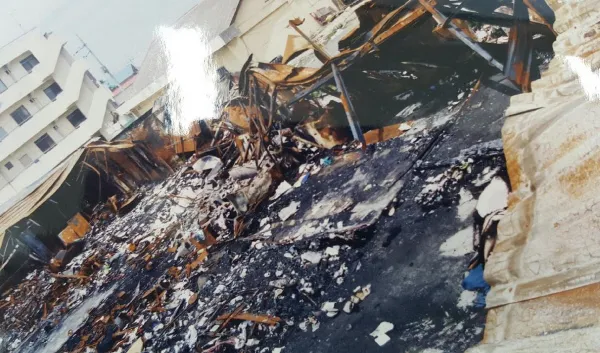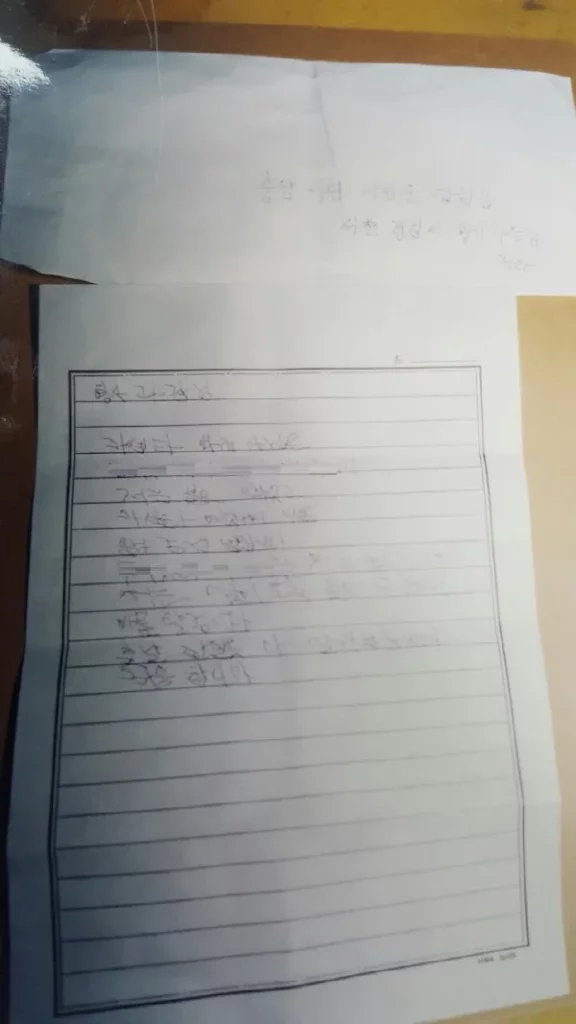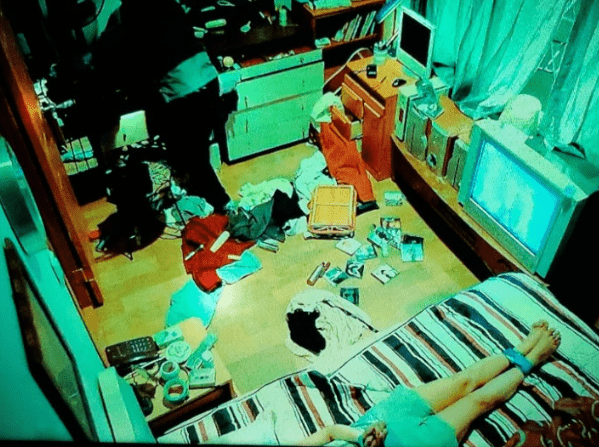A Small Town’s Big Mystery: The Murder and Arson That Defied Logic

1. THE OPENING FILE: A Night of Fire and Deception
The date was May 2, 2004. The location: Youngbo Car Center, situated in Seocheon-eup, a quiet, low-population county in South Chungcheong Province, South Korea. What began as an early morning fire quickly escalated into a complex double murder and arson case that remains unsolved two decades later.
The victim count quickly rose to three: one adult woman and two children. But the mystery intensified when the identity of the adult female corpse was revealed—it wasn’t the car center’s owner, but rather the owner of the adjacent shop. The actual car center owner was found days later, miles away, murdered by stabbing.
This case file documents the initial, disastrous investigation and the six core pieces of evidence that point toward a deliberate, coordinated attack aimed at silencing an explosive secret.
2. THE INCITING INCIDENT: The Midnight Visitor and the False Alibi
The car center was one of five businesses lined up in a single, connected building. The first sign of trouble came shortly after midnight.
At 12:40 AM, Ms. Kim (A), the 42-year-old female owner of the neighboring agricultural machine shop, received a call from Ms. Kim (B), the 43-year-old female owner of the car center.
The Crucial Lie: Ms. Kim (A) immediately prepared to leave her home, telling her 17-year-old son, Choi, that she had to go look after Ms. Kim (B)’s children because the car center’s male owner (Mr. Kim (C)) had been in a fishing-related car accident.
Choi, who walked his mother to the door, testified to seeing “several unfamiliar visitors” lingering outside the car center. Later, neighbors also corroborated this: they saw two men approach the closed, dark car center, after which the lights turned on. They witnessed Ms. Kim (B) frantically searching for something between the two male visitors.
Ten minutes after Ms. Kim (A) arrived, she, Ms. Kim (B), and the unknown men left the car center together.
[A slightly grainy, black and white image of an old, connected strip mall at night, with one section labeled “Car Center” subtly glowing with an internal light, emphasizing the eerie quiet of the small town.]
3. THE FIRE AND THE DISCOVERY OF VICTIM A
Almost two hours later, at 2:36 AM, Choi was woken by a “firecracker-like noise.” He discovered the car center ablaze, the flames quickly consuming the entire strip mall. The fire was extinguished past 3:30 AM.
Inside the ruins of the car center, firefighters recovered three charred bodies: one adult woman and two 8-year-old twins.
The System Failure: Initially, police assumed the bodies belonged to Ms. Kim (B) and her children. However, Ms. Kim (A)’s husband, Mr. Choi, was present when Mr. Kim (C) — the car center owner who was supposedly in a traffic accident — appeared at the scene, fully healthy and frantic.
- Mr. Kim (C) had been fishing since 8:30 PM the previous day. He confirmed he was not in an accident and had received no calls from his wife before the police contacted him at 3:00 AM about the fire.
DNA testing on Choi’s blood confirmed the adult body was actually his mother, Ms. Kim (A), the agricultural shop owner.
4. VICTIM B AND THE COLD TRAIL
The search for Ms. Kim (B) began.
- Initial Evidence: Hours after the fire, bloodied women’s clothing, including a jacket and a torn tracksuit top, was found near Bongseon Reservoir (a local fishing spot), 10 km away. Mr. Kim (C) confirmed they belonged to his wife, Ms. Kim (B).
- Final Discovery: Eight days after the fire, Ms. Kim (B)’s body was found by construction workers 4 km away, dumped in a large culvert near a bridge construction site.
- Her body was stripped of her shoes and pants, suspended halfway into the drainage pipe, with the lower half submerged in water.
- The medical examiner confirmed she had a deep, fatal stab wound to the neck.
The case was officially a double murder: Ms. Kim (B) was stabbed and dumped elsewhere, while Ms. Kim (A) and the twin children were killed and incinerated at the car center. Police were unable to determine the precise time of Ms. Kim (B)’s death due to decomposition in the water.
[A map showing the small town of Seocheon, marking three key locations: the Car Center, the Bongseon Reservoir where clothes were found, and the culvert where the body was dumped. Emphasize the distance between the points.]
5. THE SMOKING GUN: The Unique Belt Buckle
In July 2004, a critical piece of evidence was found at the burned car center site: a unique men’s belt buckle embedded in the floor.
- Description: The buckle featured the Taegeuk symbol (Korean national symbol) within the Mugunghwa (National Flower), suggesting it was custom-ordered for a specific institution or organization—not a mass-market item.
- The Problem: The buckle did not belong to either the car center owner (Mr. Kim (C)) or the agricultural shop owner (Mr. Choi). Crucially, the product had been discontinued 7-8 years earlier, making its manufacturer or distributor untraceable.
This belt buckle, likely dropped during a struggle with the two women, remains the only concrete physical evidence linked to the perpetrators.
6. THE UNCUT CORE: Motive, Money, and a Secret Church Fund
The town gossip initially pointed to Mr. Kim (C), the husband, due to reports of a recent, intense marital fight that involved smashing houseware and talk of divorce. However, his alibi (fishing) was solid, despite lingering suspicions of a contract killing.
The real motive may lie in Ms. Kim (B)’s finances and social life, which were completely hidden from her husband:
- Financial Shock: Mr. Kim (C) believed they had at least 150 million KRW (approx. $120,000 USD at the time) saved. Post-incident, he found their account nearly empty.
- The Missing Money: Over four years, Ms. Kim (B) had donated a total of 33 million KRW (the cost of a mid-sized sedan in 2004) to her church.
Experts speculate the mysterious visitors were not friends or family, but religious associates who came to “discuss” or “pressure” Ms. Kim (B) over a serious financial or relational matter related to the church funds. The visitors were described by a witness (via hypnosis) as “four to five people in their 40s or 50s, dressed in suits.”
The Ultimate System Failure: Years after the crime, investigators developed a strong lead: Fingerprints found on the letter (below) and current suspect DNA analysis point to a man already incarcerated for a similar crime. However, without the original, undestroyed evidence (the bodies, the clothes, the murder weapon), prosecutors cannot file charges.
7. THE CLUE FROM THE KILLER: The Strange Confession Letter

Four hours after Ms. Kim (B)’s body was found, a suspicious letter was discovered in a motel’s mail collection box, addressed to a reporter and the Seocheon Police Detective Division Chief (형사과장).
The letter, written in disguised handwriting, claimed the arson was due to Ms. Kim (A)’s “guilt” and that the murders were a crime of passion involving the writer and the two women. The writer claimed only to have “transported the corpse” and stated, “The body will be in the stream. I am leaving the country.”
Uncut US Analysis:
- The letter’s claim of a love triangle is almost certainly a diversionary tactic aimed at creating confusion.
- However, the letter contained a crucial piece of truth: “The body will be in the stream.” This confirms the writer had intimate knowledge of Ms. Kim (B)’s disposal location.
- The most alarming error: The writer addressed the recipient as a “Detective Division Chief (형사과장).” At the time, the Seocheon Police Station, being a small, third-tier station, did not have that position; a ‘Head of Investigation’ (수사과장) oversaw detectives. This suggests the author was familiar with the organizational structure of a large city police department (1st-tier station), indicating prior serious involvement with major metropolitan police investigations (i.e., a history as a serious criminal or former law enforcement).
Uncut US Final Hypothesis: The mysterious, suited visitors did not intend to kill initially but came to collect a large sum of money or secure a secret. Ms. Kim (A) became a lethal liability because she recognized the perpetrator(s). The final body count—two women and two children—suggests the perpetrators were highly organized, emotionally detached, and likely had a deep, non-familial connection to the victim, possibly linked to the 33 million KRW.
The horrifying question remains: Was Ms. Kim (B) lured to her death because her killer knew she would trust a message about her husband’s false accident, proving the killer was close enough to know Mr. Kim (C) was fishing and unavailable?
[A close-up image of the found belt buckle with the Mugunghwa and Taegeuk symbols, contrasting its formal, official appearance with the brutality of the crime scene.]

